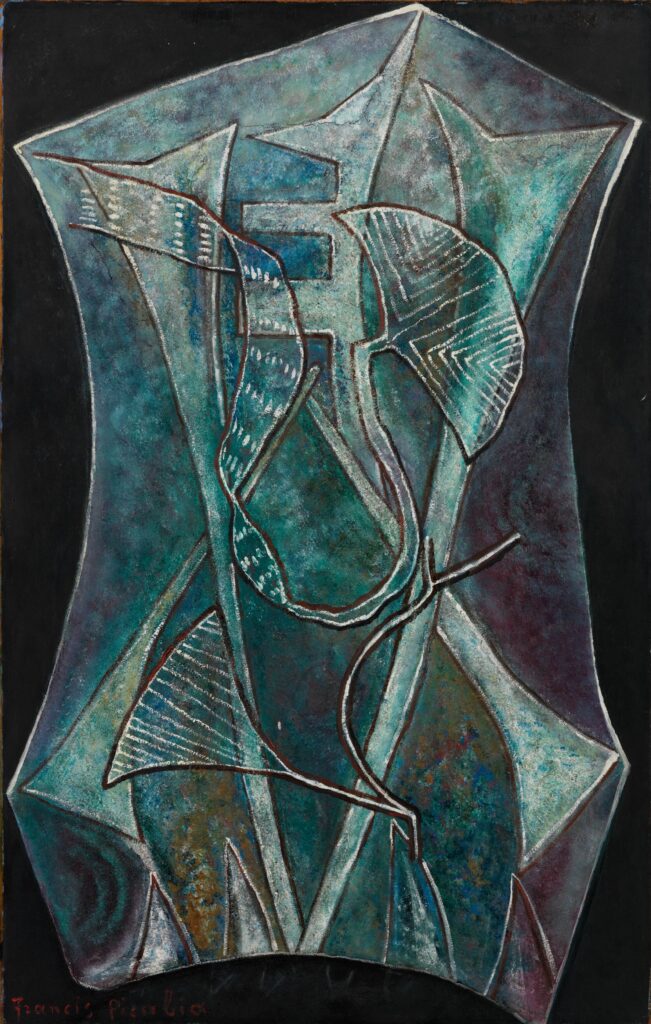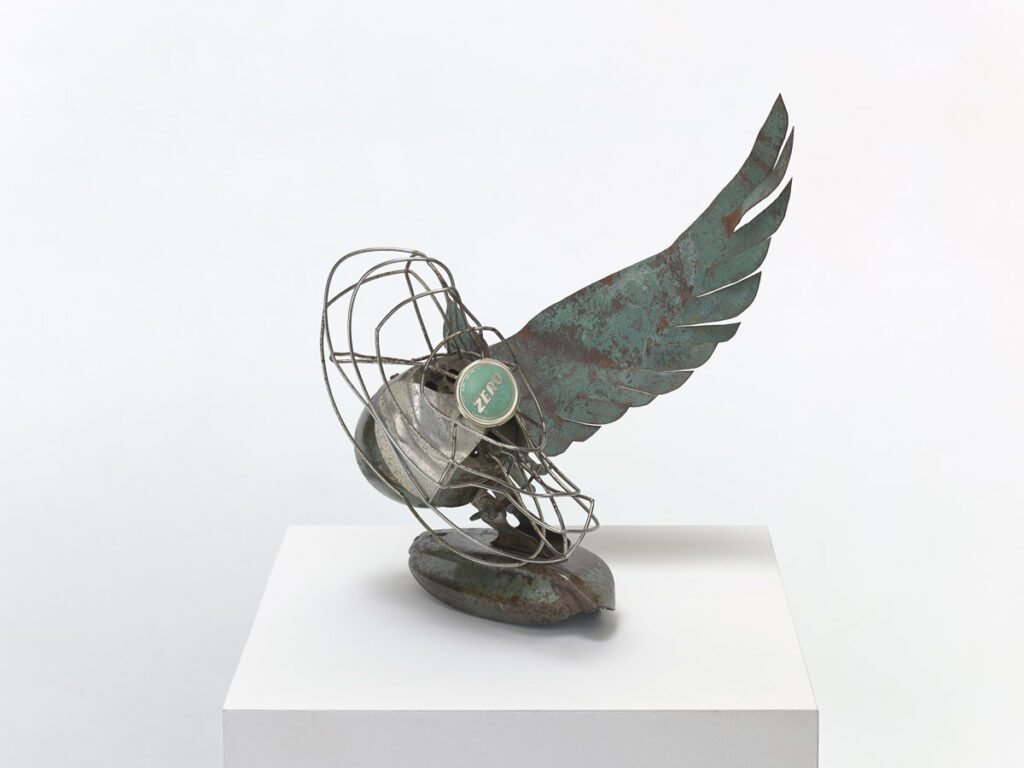A Show Behind a Show: William Kentridge’s Swan Song to a Disappearing Era of Analog Print Making
Plus, nearby exhibitions by Picabia and Rauschenberg attest to New York City’s astonishing cultural richness.

William Kentridge: A Natural History of the Studio
Hauser & Wirth 542 West 22nd Street & 443 West 18th Street, New York
Through August 1
Francis Picabia: Eternal Beginning
Hauser & Wirth, 542 West 22nd Street, New York
Through July 25
Robert Rauschenberg : Sympathy for Abandoned Objects
Gladstone Gallery, 530 West 21st Street, New York
Through June 14
Three shows in Chelsea are harkening back to three different eras in the last seven decades of art making. Hauser & Wirth pairs a new retrospective of William Kentridge, who occupies the first two floors, with a separate but complementary show of the late paintings of Francis Picabia. Gladstone, in the meantime, is hosting a rare showing of sculptures by Robert Rauschenberg, the restless pioneer who dragged abstract expressionism into the pop era.
Mr. Kentridge’s current work almost reads as a swan song to a disappearing era of analog image making. His incredibly strong drawing hand revels in the type of image making that sadly seems to be dropping away. Yet the rich, multi-sensory feel of his anachronistic world pervades this current show. His is a universe of paper notebooks, of graphite, charcoal and India ink, of protractors and wooden drawing tables. Drawings, mostly still lifes but also a recurring self-portrait rendered in reductive charcoal slashes, form the backbone of the show’s first floor. Every drawing is a gem.
It goes beyond strong draughtsmanship, however. Mr. Kentridge’s work mines the deep connections between art, place, and memory, between materials and time. This is actually a show behind a show, as well as a retrospective. Many of the drawings here were done during the making of a nine-episode video series, “Self-Portrait as a Coffee Pot,” which wowed last year’s Venice Biennale. This includes his astonishing anamorphic self-portrait reflected in a chrome cylinder.
Several of the films are included here. “Fugitive Words” positions a camera above Mr. Kentridge’s notebook on a desk. The blank pages then magically manifest marks, drawings, and notations, all to the strains of Beethoven’s “Archduke” Trio. It suggests a deep organic connection between the tree — a perennial Kentridge theme — with the materials and the syntax of art. Sketches of trees emerge from storms of hashes. There are charcoal words that morph into leaves. Mr. Kentridge suggests an organic and symbolic continuity between nature and the written mark that is elegant, profound, and ultimately moving.
On the second floor are his brightly colored sculptures, rendered in aluminum and steel but modeled on scraps of paper. They have a lightness and airiness that belies the material, almost appearing ready to float away. There is also a room of his solid casting sculptures, which playfully model everyone from Brancusi to Picasso to Louise Nevelson. Once a mime, Mr. Kentridge has always had a flair for the clownish and the theatrical.
***
On the gallery’s third floor, Hauser & Wirth shows the last paintings of Francis Picabia as a potent Kentridge complement. Exercises in primitivist and geometric refinement, Picabia has a whimsicality he shares with Mr. Kentridge. As an illustrator for Andre Breton’s provocative Surrealist magazine Litterature, Picabia is known more for his aleatoric drawing line and Dadaist antics.
Yet Picabia was always a painter, a great one. This neglected part of his oeuvre came back into the public view with the breakout “Orphism” show at the Guggenheims late last fall, which featured the extremely complex and polished abstraction of his youth.

At this late point in his career Picabia had distilled himself down to a refined primitivism, influenced as always by African folk art but also a lifetime in modernism. The colors, much like late Braque, are dark, rich, occasionally brackish, with perfectly placed accents of shape, brightness, and color.
“Joie de L’aveuglement,” or “The Joy of Blindness,” is a series of overlapping matrices in translucent aqua containing more nested forms, all set against a dramatic black background. Nested forms, especially what appears to be a bird, are a constant in this series. “Composition” in the next room, has the outlines of this motif emerging against a background of robin’s egg blue and chocolate brown. It so viscerally pleasing you feel it rather than see it.
***
Rauschenberg always tinkered with the flat pictorial plane, often embellishing it with found objects. His sculptures, however, are less well known. Now the Gladstone, in association with the Rauschenberg Foundation, has assembled 30 of them in a single room.
These assemblages and found objects are an inflection point in his early development. The artist David Salle, who delivered remarks on Saturday, wondered aloud at how Rauschenberg, a kid from Texas with no discernable inclinations until his 20s, suddenly became a titan of the art world whose compositional and linear refinement rarely, if ever, missed. These sculptures may provide a clue.

Seen together they are challenging marvels that are exercises in transformative grammar. As Mr. Salle points out, they often investigate the route between two points, like the fireman’s hose with a coiled, aleatoric length of hose between the brass nozzle and its anchoring point. Is it a drawing, a sculpture, or both?
He also experiments with ready-mades and all sorts of scale. A carburetor stands alone as a dark, primitivist totem. A dented metal fan, affixed with a turquoise metal wing, is a fragile and moving testament to flight. There are also several tiny boxes that create delicate miniature worlds reminiscent of Joseph Cornell.
Bathos also inflects much of the work. His airplane passenger window, with jagged, broken safety glass on its edges, alludes perhaps to a crash in the middle of his young life. Yet Rauschenberg pushed through his reasoning with line, form, material, and composition in ways that would make him the art giant he became in ensuing decades.
Taken as a trio, these shows attest to the city’s astonishing cultural richness. Only here, within the span of two neighboring streets, can you see three great artists — during New York spring no less.

